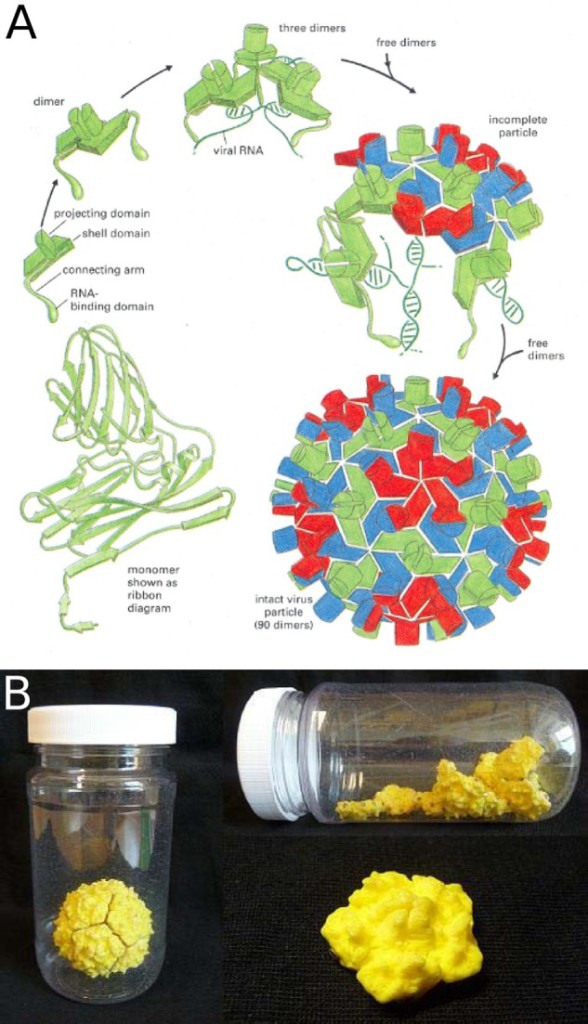
The publication G. E. Ho ̈st et al. CBE—Life Sciences Education (2013) featured our Self-Assembly Virus Kit to investigate the impact of using a tangible 3D model and a static 2D image on student learning about the process of self-assembly.

The publication G. E. Ho ̈st et al. CBE—Life Sciences Education (2013) featured our Self-Assembly Virus Kit to investigate the impact of using a tangible 3D model and a static 2D image on student learning about the process of self-assembly.
Using the self-assembling virus models, we demonstrate how distinct particle types can aggregate through random motion to form complete and distinct assemblies. The models are composed of distinct poliovirus pentamers and their mirror images counterparts which assemble and segregate into two distinct viral capsids. No trick photography used.
Learn more about chirality here.